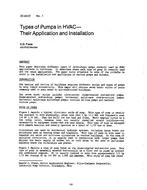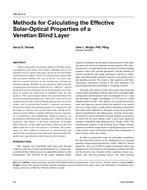In most installations, heat pump heat. recovery systems have followed more or less conventional cycles. In many cases, added exchange apparatus resulted in added first cost for the recovery or transfer functions.
During 30 years in the field of heat recovery applications, entirely different cycles were developed by the author. In many cases, the differences were intended to increase the efficiency of the heat pump’s heat recovery, but they also favorably affected air-conditioning procedures. In all cases, power and overall operating expense were reduced, and in some cases, first cost was reduced for part, if not all, of the heating – cooling functions.
The importance of close approach coils was recognized in the earliest applications. This close approach was expanded to the cooling tower — heat exchange functions, condensers, and water coolers. With close approaches, the return water is substantially the same temperature all year. This feature led, in turn, to a common return pipe and made possible an efficient and workable three-pipe system (hot supply, cold supply, and common return). Wide ranges result in smaller as well as fewer pipes, less insulation, smaller valves and controls. Most important, the equipment sizes were reduced.
Control by mixing return and hot water for heating and return and cold water for cooling is a simple and inexpensive way to eliminate problems resulting from variable pumping quantities.
Close approaches made possible the development of the heat pump for less expensive summer cooling in conjunction with compression system staging. Multiple condensers and water coolers in series permit high condensing and low chilled-water cooling temperatures at reduced operating costs.
The higher condensing water temperature is made possible by the use of low-humidity inside exhaust air for either fluid cooler condensing or cooling towers with close approach water through water plate type heat exchange.
The lower chilled-water temperatures result in low-humidity return air that permits water off the exchanger to be lower in tempera~re thlan the direct return water from wide-range coils. In effect, this allows part of the summer internal heat to be discharged directly to the fluid cooler or through a heat exchangerto the cooling tower, thus reducing the water chiller capacity.
This use of a summer heat pump is particularly desirable with tank storage to reduce summer demand charges and so-called ratchet charges (where peak summer demand affects year-round peak demand). The water wide range greatly reduces the tank size.
Probably most important is the heat balance control, which made possible the elimination of the winter economizer cycle removing usable and valuable heat that could be recycled for winter heat pump operation. The staging permits higher hot water for heating than is available without staging.
It is all the benefits in combination that is most valuable, especially in reducing first costs.
Units: I-P
Citation: Symposium, ASHRAE Transactions, 1988, vol. 94, pt. 2, Ottawa
Product Details
- Published:
- 1988
- Number of Pages:
- 16
- File Size:
- 1 file , 1.5 MB
- Product Code(s):
- D-OT-88-17-3


